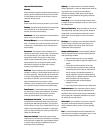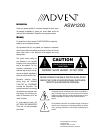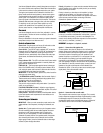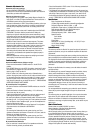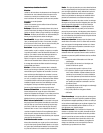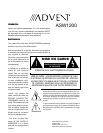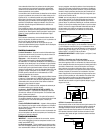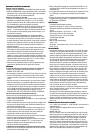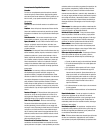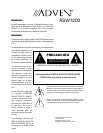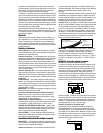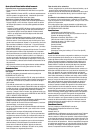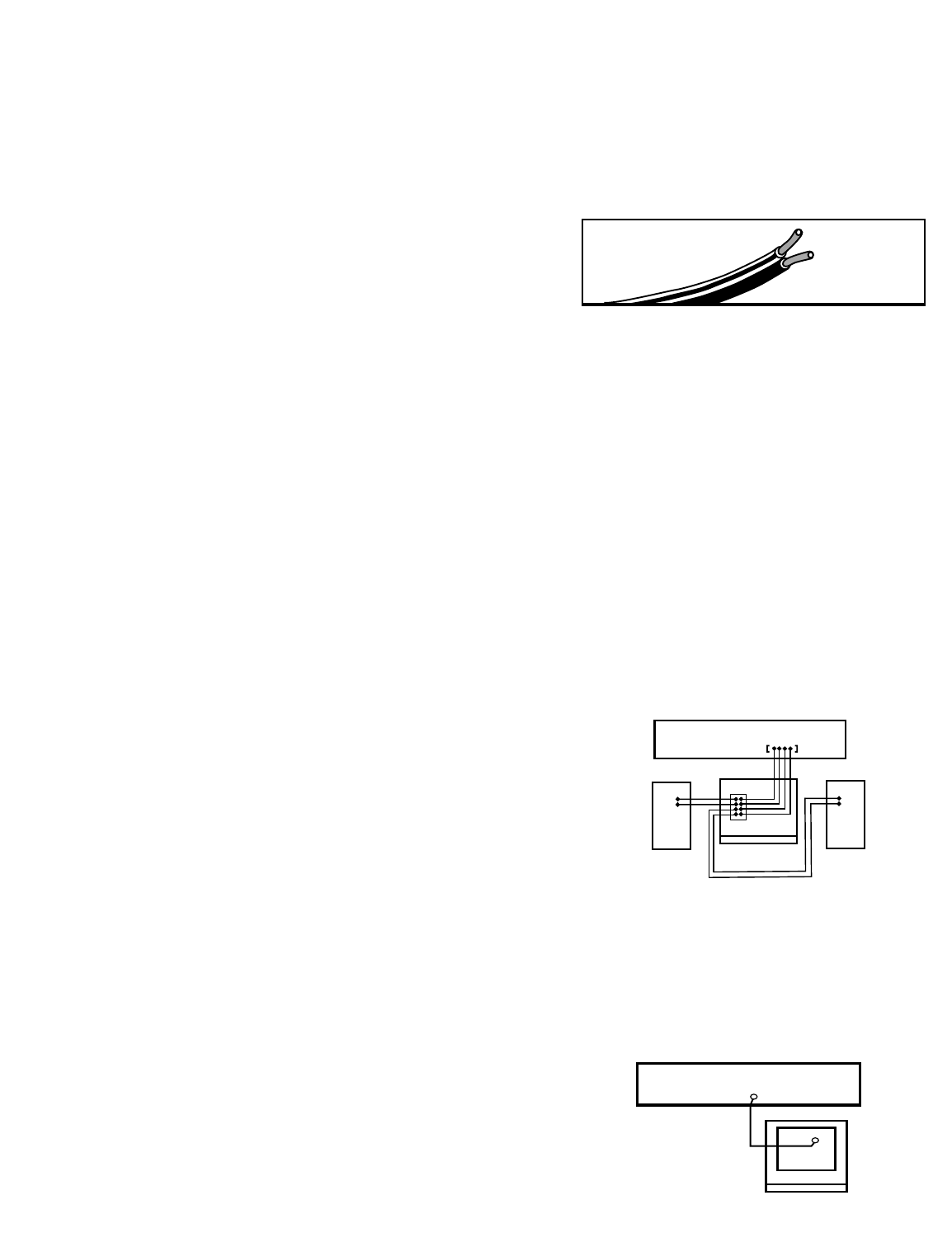
Your Advent Subwoofer delivers powerful, deep bass sound output
for a natural, life-like sonic experience. Please follow the directions
in this manual to achieve the best performance from your system.
The hook-up and operation of the Subwoofer is the same for a
Home Theater surround sound system or a stereo music system.
The Subwoofer has its own built-in amplifier, so it works with any
sound system. The Subwoofer’s own crossover network sends
bass-only signals to the Subwoofer’s built-in amplifier. This lets the
Subwoofer add extra bass to the output from your other speakers.
For simplicity, we call your Home Theater system’s or music
system’s main speakers the Front speakers. We call your AV
receiver, stereo receiver, or integrated amplifier the Receiver.
Placement
Your Advent Subwoofer must sit on the floor, preferably in a corner,
to work properly. The floor and corner are actually a part of the
Subwoofer’s design.
Place your Subwoofer in the corner nearest your system’s electronic
components to keep wire or cable runs short.
Controls & Connections
Power Cord – Plug the power cord into an AC wall outlet or other
AC outlet capable of supplying at least 200 Watts.
Power Switch – Turns the AC supply completely OFF or sets the
Subwoofer to AUTO ON operation. In AUTO ON, the Subwoofer is
in standby mode until it detects an audio signal input, then the
Subwoofer turns on automatically. A few minutes after audio input
signals cease, the Subwoofer automatically returns to standby
mode.
Power indicator LED – This LED is unlit when the AC power switch
is OFF. It glows red when the Subwoofer is in standby mode and
green when the Subwoofer is on.
FUSE 250V 2A – This fuse protects against internal and external
faults. If the POWER switch is ON and the power indicator LED is
unlit, unplug the power cord from the AC outlet and check the fuse
by unscrewing the center piece from the holder.
IMPORTANT – If the fuse is blown, replace it only with a fuse of the
same type and current rating.
L, R SPEAKER-IN and OUT Terminals -See Connection Option 1-
These terminals are for making connections using speaker wire. If
you use this option, do not use Option 2.
LINE IN Jack – See Connection Option 2
This jack is for input connection using audio cables. If you use this
option, do not use Option 1.
LOW PASS FREQUENCY Control – Adjust the upper frequency
limit for audio signals going to the Subwooofer amplifier. This control
helps you adjust the system tonal balance.
LEVEL Control – Balances the loudness of the Subwoofer relative
to the Front speakers and compensates for room effects on the
Subwoofer’s output.
Connecting your Subwoofer
IMPORTANT – When you make connections, make sure that the
power switches of all components, including the Subwoofer, are
OFF.
Speaker wire Typical speaker wire has a pair of separate conduc-
tors with insulating jackets that are molded together. We recom-
mend that you use 16-gauge speaker wire for hooking your
Receiver to your Front speakers. To make connections to the
Subwoofer in parallel with the Front speakers easier, the speaker
wire connecting the Receiver to the Subwoofer can be smaller
(higher gauge number), since the Subwoofer does not draw large
amounts of power through these wires.
Polarity All speakers in a system must be connected with the same
polarity. Speaker wire is marked for polarity so that you can identify
which wire in the pair is which.
Polarity is shown by a color stripe on the insulation, by ridges
molded into the insulation, or by the colors of the wires – one
copper and one silver. Strip the insulation from speaker wire ends to
reveal the bare conductors before connecting to Receiver,
Subwoofer or Speaker terminals.
IMPORTANT – Always connect the red (+) terminal on the Receiver
to the red (+) terminal on the Subwoofer, and the black (-) terminal
on the Receiver to the black (-) terminal on the Subwoofer. The
same is true for hooking the Receiver outputs to the Front speakers:
red (+) to red (+), and black (-) to black (-).
IMPORTANT Use Option 1 or Option 2, not both.
Option 1 – Connection with speaker wire
Connect speaker wires from the Receiver’s front left and right
speaker outputs to the Subwoofer’s Speaker Level-In connections.
Connect left channel to left input and right channel to right input.
You have the option of connecting your main speakers to the
speaker B outputs on your Receiver, if it is so equipped. You also
have the option of connecting your main speakers using the
connections on the Subwoofer. This will pass the audio signal to
your main speakers, except the low bass which will be produced by
your Subwoofer. To use this connection option, connect your main
speakers to the right and left outputs on the Subwoofer (see
illustration for Option 1). Be sure you take care to maintain proper
signal polarity, red to red and black to black.
Option 2 – Connection with an audio cable
This connection uses a low level mono sub signal. This is usually
found on Receivers equipped with Dolby
®
Digital decoding. Locate
the Subwoofer output on the back of your receiver. Using a
standard RCA cable connect the Subwoofer output on the back of
your Receiver to the Line-In on the back of the Subwoofer.
+ to red terminal
(color stripe, ridges or cooper)
3/8"
(9mm)
bare wire
- to black terminal
(plain or silver)
SUBWOOFER
LEFT
SPEAKER
RIGHT
SPEAKER
RECEIVER
Speaker Outputs
Speaker Level
Out
In
RECEIVER
SUBWOOFER
Subwoofer
Output
Line In



